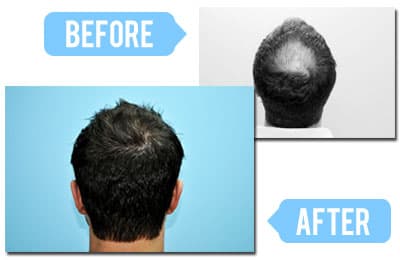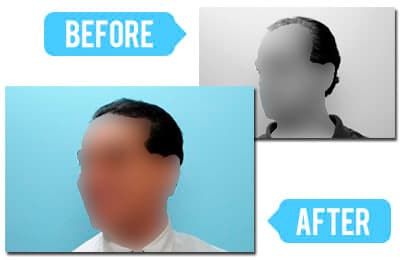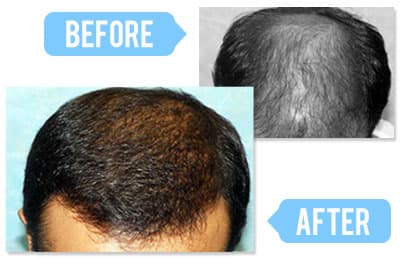FUE (Follicular Unit Extraction) hair transplant is a minimally invasive hair restoration procedure that helps individuals regain natural-looking hair without leaving a noticeable scar. This advanced technique extracts individual hair follicles from a donor area—usually the back of the head—and implants them into thinning or bald areas.
Unlike traditional FUT (Follicular Unit Transplantation), FUE does not involve cutting a strip of scalp, making the recovery process quicker and less painful. Whether dealing with male pattern baldness, thinning hair, or hair loss due to medical conditions, FUE offers an effective solution. This guide explores the benefits, procedure, recovery timeline, cost, etc.
What Makes FUE Different from Other Hair Transplants?

FUE hair transplant is often compared to FUT and DHI (Direct Hair Implantation), but each method has distinct advantages.
- FUE vs. FUT: Unlike FUT, which removes a strip of scalp, FUE extracts hair follicles individually, minimizing scarring and allowing a quicker recovery.
- FUE vs. DHI: DHI uses a special pen-like tool to implant grafts directly, whereas FUE requires creating recipient sites before implantation. FUE is often preferred for covering larger bald areas.
FUE’s minimally invasive nature, natural results, and reduced downtime make it a top choice for those seeking a permanent hair restoration solution.
Who is a Good Candidate for FUE?
Not everyone is an ideal candidate for a FUE hair transplant. You may be a good fit if you:
- Have male or female pattern baldness but enough donor hair on the back or sides of your head.
- Prefer a minimally invasive procedure with no visible scarring.
- Want a natural-looking hairline with even density?
- Have realistic expectations about the results.
However, FUE may not be ideal if you have severe baldness with limited donor hair or certain medical conditions that affect healing. Consulting a qualified hair transplant surgeon can help determine if FUE is right for you.
Step-by-Step Procedure of FUE Hair Transplant
1. Pre-Surgery Consultation and Preparation
Before the procedure, your doctor will examine your scalp, discuss your hair goals, and design a personalized treatment plan. You may be advised to avoid alcohol, smoking, and certain medications to ensure a smooth surgery.
2. Hair Follicle Extraction
- The donor area is shaved and numbed with local anesthesia.
- Using a micro punch tool, the surgeon extracts individual hair follicles from the donor area.
3. Implantation of Hair Grafts
- Tiny recipient sites are created in the thinning areas.
- The extracted follicles are carefully implanted for a natural hair growth pattern.
4. Post-Surgery Care
- The scalp is cleaned, and instructions for aftercare are provided.
- Patients can return home the same day.
Benefits of FUE Hair Transplant
FUE hair transplants offer several advantages over other hair restoration techniques:
✅ No Linear Scarring – Unlike FUT, FUE doesn’t leave a long scar, making it ideal for people who prefer short hairstyles.
✅ Natural Results – Hair grows naturally and blends seamlessly with existing hair.
✅ Quick Recovery – Most patients return to work within a few days.
✅ Minimally Invasive – No stitches or major incisions are required.
✅ Suitable for Different Hair Types – Works well on straight, wavy, and curly hair.
Potential Risks and Side Effects
Like any surgical procedure, FUE has potential risks, but they are rare when performed by an experienced surgeon. Common side effects include:
- Mild swelling and redness around the transplanted area.
- Shock loss, where some transplanted hair falls out before new growth begins.
- Itching and scabbing in the donor and recipient areas.
- Uneven hair growth if not done by a skilled specialist.
Following post-surgery care instructions can help minimize these risks and promote faster healing.
Recovery Timeline & Aftercare Tips

First 24-72 Hours
- Avoid touching the scalp to prevent infection.
- Sleep with your head elevated to reduce swelling.
- Take prescribed medications for pain relief if needed.
First Month
- Some shedding (shock loss) may occur—this is normal.
- Avoid direct sun exposure and strenuous activities.
3-6 Months
- New hair begins to grow.
- Patients may notice an uneven growth phase, but this improves over time.
12 Months & Beyond
- Full hair regrowth is visible, and the results are permanent.
To maximize results, patients should follow a healthy diet, take recommended supplements, and avoid smoking and excessive stress.
Cost of FUE Hair Transplant
The cost of an FUE hair transplant varies depending on several factors:
💰 Location – Clinics in the UK, USA, and Europe tend to charge higher than those in Turkey or India.
💰 Surgeon’s Expertise – Highly experienced specialists charge more.
💰 Number of Grafts – More grafts mean a higher cost.
On average, an FUE hair transplant costs £3,000 – £10,000 in the UK, but low-cost clinics may compromise quality.
How to Choose the Right Surgeon and Clinic
Selecting the right hair transplant clinic is crucial for successful results. Here’s what to consider:
🔍 Certification & Experience – Choose a board-certified surgeon with a strong portfolio.
🔍 Clinic Reputation – Read reviews and check before-and-after photos.
🔍 Technology & Techniques – Ensure the clinic uses advanced tools and modern FUE techniques.
🔍 Transparent Pricing – Avoid clinics that offer suspiciously low prices.
Alternatives to FUE Hair Transplant
If you’re unsure about surgery, consider these non-surgical hair restoration alternatives:
🔹 PRP Therapy – Uses platelet-rich plasma to stimulate hair regrowth.
🔹 Minoxidil & Finasteride – FDA-approved hair loss treatments.
🔹 Scalp Micropigmentation (SMP) – Creates the illusion of a fuller head of hair.
These options can enhance hair thickness or delay hair loss, but they don’t provide permanent results like FUE.
Section 11: FAQs About FUE Hair Transplant
💬 How long does an FUE transplant last?
✔️ Permanent, as transplanted hair is resistant to hair loss.
💬 Can I wear a hat after surgery?
✔️ After 10-14 days to avoid disrupting healing.
💬 Is the procedure painful?
✔️ No, local anesthesia makes it painless.
Conclusion & Next Steps
FUE hair transplant is an effective, permanent solution for hair loss with natural results and minimal downtime. If you’re considering this procedure, consult with a qualified hair transplant specialist to explore your options.
Would you like a free consultation to see if FUE is right for you? Contact a trusted clinic today!





